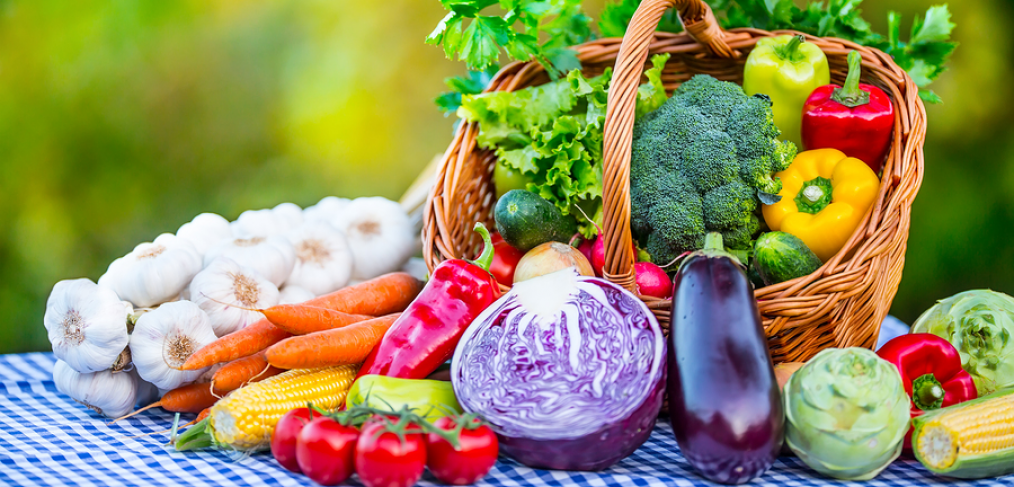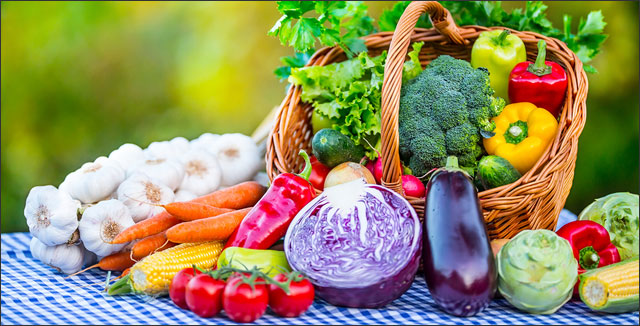
Community Supported Agriculture: What a CSA Can Do For You

Do you have a favorite summer vegetable or garden-grown fruit that you just can’t wait to come in season each year?
I know I do. Tomatoes, strawberries, and watermelons are at the top of my list. Actually, they are all so much better when homegrown; sweeter, crunchier, with more depth of flavor.
There are times I’ve tasted my homegrown produce and thought I really didn’t know that vegetable was so delicious. Most of the time supermarket staples aren’t even close to tasting the same. It’s a shame, too. I think more of us would enjoy vegetables more if they had a chance to taste them in their fullness.
There is a way!
I realize not everyone is a gardener and not everyone wants to take care of a big garden plot. Even if they do, they might not have the luxury of a big backyard with enough access to sunlight to grow one.
Did you know that you probably, right now, have more access to affordable fresh vegetables and fruits during the growing season than you think?
I’m talking about Community Supported Agriculture.
What is Community Supported Agriculture?
CSAs have grown up alongside this newer trend of small, organic farming. They can be found in most areas of the country. The result is in a box of fresh, delicious produce being delivered straight to your door.
How could you say no to that?
Here’s how it works. Small, local farmers offer a certain number of “shares” of their produce to the public. A share could be a box of vegetables. It can also include a chicken, eggs, milk, freshly baked bread or anything else the farm makes or produces that interest consumers.
You buy a share at the beginning of the season. Then, you receive your agreed-upon share each week through the allotted span of time. This is usually late spring through fall. It’s an advantageous system for many reasons.
Advantages of CSAs
- Marketing happens during the non-growing season for farmers. This way, they can concentrate on just producing your delicious food during the warm months.
- Consumers get the freshest food possible, without actually growing it themselves. Usually, it’s been picked within a day or two of being delivered.
- Farmers have a more guaranteed source of funding before growing season to keep afloat and keep delivering the healthiest food around.
- Farmers and consumers have a chance to get to know each other face to face. In addition, farmers see where their customers live. The customers get a chance to visit where their food is grown to see the farming practices for themselves.
- Customers get their food delivered to them, no hassle.
- Customers have a chance to receive vegetables they won’t find in the supermarket. They learn new ways of cooking them. In addition, they are able to eat a more diverse diet – which is proven to contribute to overall health.
- Kids who otherwise wouldn’t have this chance get to see food being grown and get interested in foods they ordinarily wouldn’t want to eat.
This simple, community-oriented idea has had quite an impact on our country and the way it consumes food. Many thousands of families have joined CSAs. This provides meaningful, healthy work for small farmers and business owners and a healthier way of living for themselves and their children. In many areas of the country, there are more families wanting a CSA share than there are CSAs to fulfill them.
Where to Find a CTA in Your Area
Our government doesn’t track CSAs. As a result, it can prove difficult sometimes to find one. Sometimes the best way to find out is by word of mouth or to show up at a farmer’s market or two and ask around. You may find you will have to wait for a year or two. but it will be worth it!
Check out the LocalHarvest National Directory for a fairly comprehensive list of over 4,000 CSA farms located within the US.
Downsides to Community Supported Agriculture
It’s hard to imagine a downside, but there is one built into the system. It is not like most other commercial transactions in this country.
There is a shared risk involved with being part of a CSA – hence the “community” part – that big food production doesn’t involve. Members of a CSA pay up front, not knowing what the growing season will hold and if they will get everything their hearts’ desire.
It can be a big risk if you don’t have a lot of cash on hand. You also don’t always get reimbursed if pickings are slim in a particular month or week. The idea is that all members of the CSA understand this risk and that they are willing to undertake it for the potential benefits for everyone.
If you think about it, agricultural production taken on in this way is more responsible toward the earth and toward the workers in the fields than the typical model. In the big agricultural model, produce is coerced from the ground and plants using fertilizers and pest control that weakens the soil, damages our water systems, and doesn’t allow the ground to recover.
Migrant workers, in many cases, absorb the burden of supermarket prices by working for very little money. A CSA, on the other hand, puts the risk into the pockets of the consumer. Consumers have the opportunity to feel their food choices a little bit more.
Think about it. How would you feel it if you were responsible for producing enough food to feed you and your family through the winter? In my opinion, a CSA is a great way to honor both the work and the earth even if you live in the suburbs or the city.
Conclusion
Community Supported Agriculture is a quiet revolution that began about 25 years ago and that is gaining traction in every area of our country. It’s a wonderful way to meet new people in your community and experience heirloom varieties of fruits and vegetables you may never have heard of. It is also a great way to get a steady supply of all your favorite ultra-fresh veggies and not be just a consumer of your food.
Even if you can’t farm or garden yourself, you can be an integral part of ensuring that this way of life doesn’t disappear. The best part? You get to eat some of the best food around.

